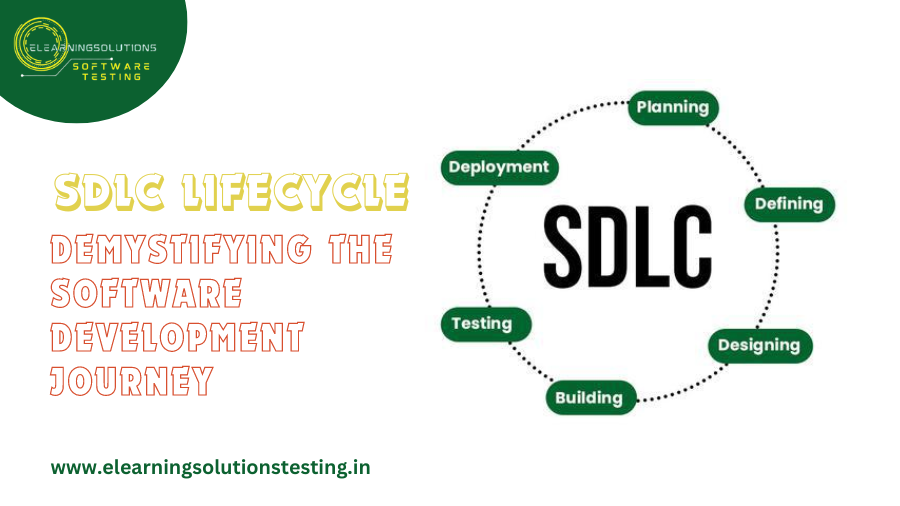In today’s tech-driven world, software plays a ubiquitous role. From the apps on our phones to the complex systems running businesses, well-crafted software is the foundation of countless functionalities. But how exactly does a brilliant idea transform into a polished software product? Enter the SDLC, or Software Development Life Cycle. This blog delves into the intricate world of the SDLC Lifecycle, unpacking its phases, methodologies, and the immense value it brings to the software development process.
Why embrace the SDLC lifecycle? A Recipe for Success
Imagine building a house without a blueprint. The SDLC acts as the blueprint for software development, outlining a structured, phased approach that guides teams from conception to deployment and beyond. Here’s why the SDLC is a recipe for success:
- Enhanced Quality: By adhering to a defined process, the SDLC ensures a systematic approach to development, minimizing defects and delivering a higher-quality final product.
- Improved Efficiency: Clear deliverables and defined stages streamline development, reducing rework and delays, ultimately saving time and resources.
- Reduced Risk: The SDLC promotes proactive planning and risk management, allowing teams to identify and mitigate potential issues before they snowball into major problems.
- Clear Communication: A structured SDLC fosters better communication between stakeholders, including developers, designers, clients, and end-users, ensuring everyone is on the same page about project goals and expectations.
- Cost Control: The SDLC framework enables better cost estimation and control throughout the development process, preventing budget overruns and ensuring efficient resource allocation.
A Step-by-Step Journey: Unveiling the SDLC Lifecycle Phases
While specific SDLC models might have slight variations, the core phases typically include:
- 1. Planning and Requirement Analysis: This crucial first stage involves gathering requirements from stakeholders. Think of it as brainstorming sessions to define the software’s purpose, functionalities, target audience, and desired user experience.
- 2. Design: Armed with a clear understanding of requirements, the software’s architecture and user interface (UI) are meticulously designed in this phase. Here, wireframes, prototypes, and mockups come to life, visualizing the software’s layout and user interactions.
- 3. Development: This is where the magic happens – the actual coding and development of the software application takes place. Developers translate designs into functional code, bringing the software to life line by line.
- 4. Testing: Rigorous testing is performed throughout the development lifecycle, but a dedicated testing phase ensures no stone is left unturned. Testers identify and rectify bugs, ensuring the software functions as intended and delivers a seamless user experience.
- 5. Deployment: The moment of truth! The software is released to its target environment (think app store, internal server, etc.) and made available to users.
- 6. Maintenance: The software’s journey doesn’t end with deployment. This phase involves ongoing bug fixes, updates, and enhancements to ensure the software remains functional, secure, and meets evolving user needs.
Navigating the Landscape: A Look at Popular SDLC Methodologies
The SDLC isn’t a rigid one-size-fits-all approach. Different methodologies cater to specific project needs and development styles. Here are some of the most popular SDLC methodologies:
- Waterfall Model: This traditional, sequential approach follows a linear progression, where each phase must be completed before moving to the next. Think of it as a waterfall – once you go down, there’s no coming back.
- Agile Methodology: This iterative and flexible approach emphasizes continuous development and feedback loops. Imagine climbing a mountain – you take small steps, constantly assess your progress, and adapt your route as needed.
- DevOps Methodology: This collaborative approach breaks down silos between development (Dev) and operations (Ops) teams, promoting faster delivery and deployment. DevOps is like a well-oiled machine, with all parts working together seamlessly.
SDLC: A Journey of Continuous Evolution
The SDLC landscape is a living, breathing entity, constantly adapting to advancements in technology and development practices. Here are some key trends shaping the future of SDLC:
- Automation: Repetitive tasks like testing and deployment are becoming increasingly automated, freeing up development teams to focus on more complex aspects.
- DevSecOps: Integrating security considerations throughout the SDLC is becoming paramount, proactively safeguarding software from vulnerabilities.
- Cloud-Based Development: Cloud platforms offer flexibility and agility, enabling faster development cycles and easier collaboration.
Conclusion: Charting Your Course with the SDLC
The SDLC serves as a valuable roadmap, guiding software development teams towards creating high-quality, user-centric applications. By understanding the core phases, methodologies, and future trends of the SDLC, you gain valuable insights into the software development process.
This knowledge empowers you to:
- Become a Better Developer: Grasping the bigger picture of software development helps developers write cleaner, more maintainable code and collaborate effectively within the SDLC framework.
- Excel as a Project Manager: Understanding the SDLC empowers project managers to create realistic timelines, manage resources efficiently, and anticipate potential challenges.
- Be a Savvy Client: Knowing the SDLC phases helps clients ask informed questions, provide clearer requirements, and foster a smoother development process.
Whether you’re a seasoned developer, an aspiring project manager, or simply interested in how software comes to life, familiarizing yourself with the SDLC lifecycle equips you to navigate the exciting world of software creation. The SDLC is not a rigid rulebook, but rather a flexible framework that can be adapted to fit the unique needs of each project. By embracing the SDLC, you can ensure your software development journey is successful, efficient, and ultimately delivers exceptional value to users.

